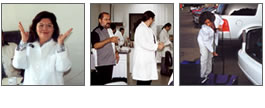





The prevention of bacterial contaminates in raw milk is of concern to all Dairyman. However, there are several major sources of contamination. One comes from not properly cleaning the udder before milking and the other is from the milking equipment. The most overlooked cause is the environment.
The cleaning of soil, bedding, and manure is a good sanitation practice that prevents the introduction of bacteria that may end up in the finished product. All of the visible dirt must be washed off of the udders. This one simple act is key in the prevention of high SPC, LPC, and coliform counts.
It is very important to wash the udders completely. The re-use of cloths for cleaning and sanitizing offers an opportunity for recontamination of the udders. One must remember that when you are dealing with bacteria just because something looks clean does not mean that it is clean.
Common soil bacteria may not only be coliforms as commonly thought but may also include several types that produce spores. These spores may survive pasteurization and lead to high LPC counts. That dirt that is not washed off in the first step may end up in the finished product.
The other often-overlooked problem is the milking environment. By this I mean is your milking parlor clean? Has all manure and mud been cleaned from the milking stalls? Are there a lot of flies or other insects in the parlor? Does your milking parlor smell? If you answered yes to any of the questions then the milking environment is not as clean as it should be to insure quality milk production. I know that this all seems very simple, but sometimes these easy steps are overlooked.
The other source of contamination is the milk equipment.